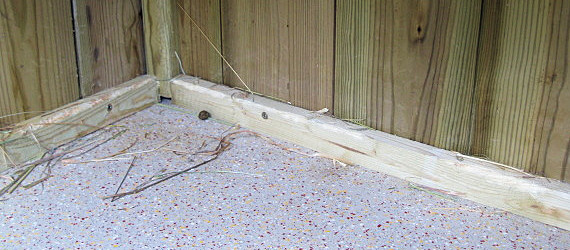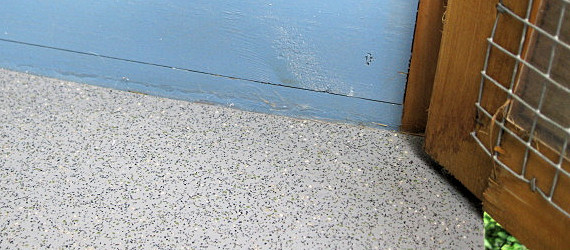The Rabbit Hutch
The most popular accommodation for a rabbit is a hutch. You'll need to be careful about selecting one though, some cheaply made hutches are little more than small plywood boxes and don't provide a suitable living area for a rabbit.
A hutch should be large enough for your rabbit to move comfortably, have enclosed area for your rabbit to sleep/hide in, and provide secure shelter from predators and inclement weather. Sturdily built hutches in larger sizes and with multiple levels are becoming more easily available, but if you can't find a supplier try commissioning one from a local carpenter - or make your own.
If you're intending to house your rabbit outside in a hutch, the following are some points you should consider:

Rabbit Hutch Size
With rabbit accommodation, bigger is better - rabbits need plenty of space to move. Minimum hutch sizes are just that - the absolute minimum. The RSPCA and RWA (UK) recommend a minimum hutch size of 6' x 2' x 2' (see size guide). These are for average size pet rabbits. Larger rabbit breeds will need much larger hutches, a rabbit shed may be more appropriate.
In addition to a hutch, a rabbit needs a minimum of several hours exercise a day in a larger area such as a rabbit run or room indoors. Attaching the hutch to the run is a great solution as it allows the rabbit free access to a large area.
Make Your Hutch Secure
Many rabbit hutches have doors that are secured with a twisting section of wood. Unfortunately, this can easily become loose or a fox (or other predator) scratching at the door can open it.
This style of hutch door catch should be replaced with proper slide bolts and in some cases with the addition of a padlock too - more on types of locks. These can also be handy for preventing young children opening the hutch unsupervised.
Another potential problem area can be the mesh sections of the hutch - this should be securely fastened and preferably weld mesh rather than chicken wire. You can attach mesh using U-shaped nails available from DIY stores. Mesh that has small holes (under half an inch) is best - larger diameters can allow cats (or other animals) to put their paws inside and claw at the rabbit.
A Leg to Stand on
Rabbit hutches need to be raised of the ground to protect them from rising damp. If your rabbit hutch doesn't already have legs then you can make your own or some hutch manufacturers also sell separate legs. Another alternative are castors (wheels) designed for cabinets which should be available from your local DIY store. A lower tech solution is a brick at each corner.
The Hutch Walls
Where possible avoid hutches with thin plywood walls - these might be slightly cheaper but will need replacing much sooner than a strongly built tongue and groove hutch. Check the walls regularly for water stains and wear. The protective stain/varnish will need maintenance approximately every 1-2 years.
Hutches should not be all wire; they must have an enclosed box/bed area for your rabbit hide in when frightened, feel secure when sleeping and snuggle up in cold weather.
The Hutch Floor
Hutches should have solid floors rather than mesh, which is bad for rabbit's feet. To make the floor easy to clean and protect it from urine, I would suggest fitting lino style floor covering. You may be able to obtain off cuts or pieces from the end of a roll cheaply by asking local kitchen/bathroom flooring suppliers. A slightly tougher alternative is vinyl safety flooring, which is used in many vet practices; it's a harder, more rigid, material and is non-slip.
To fit the flooring you'll need to cut it to fit the base of the hutch and then fix it in place with either double sided tape or glue (tape is easier). To prevent your rabbit chewing or digging and lifting the lino you'll need to fit edging strips or battens where the wall meets the floor - like a skirting board. The edging will also hide any wonky bits when you didn't cut straight. There will be a variety of styles available in your local DIY store and they can be nailed into position.

As an alternative to the edging, or in addition, you can then seal around with silicone seal.

You should finish up by providing a litter tray in your rabbit's preferred toilet corner.















